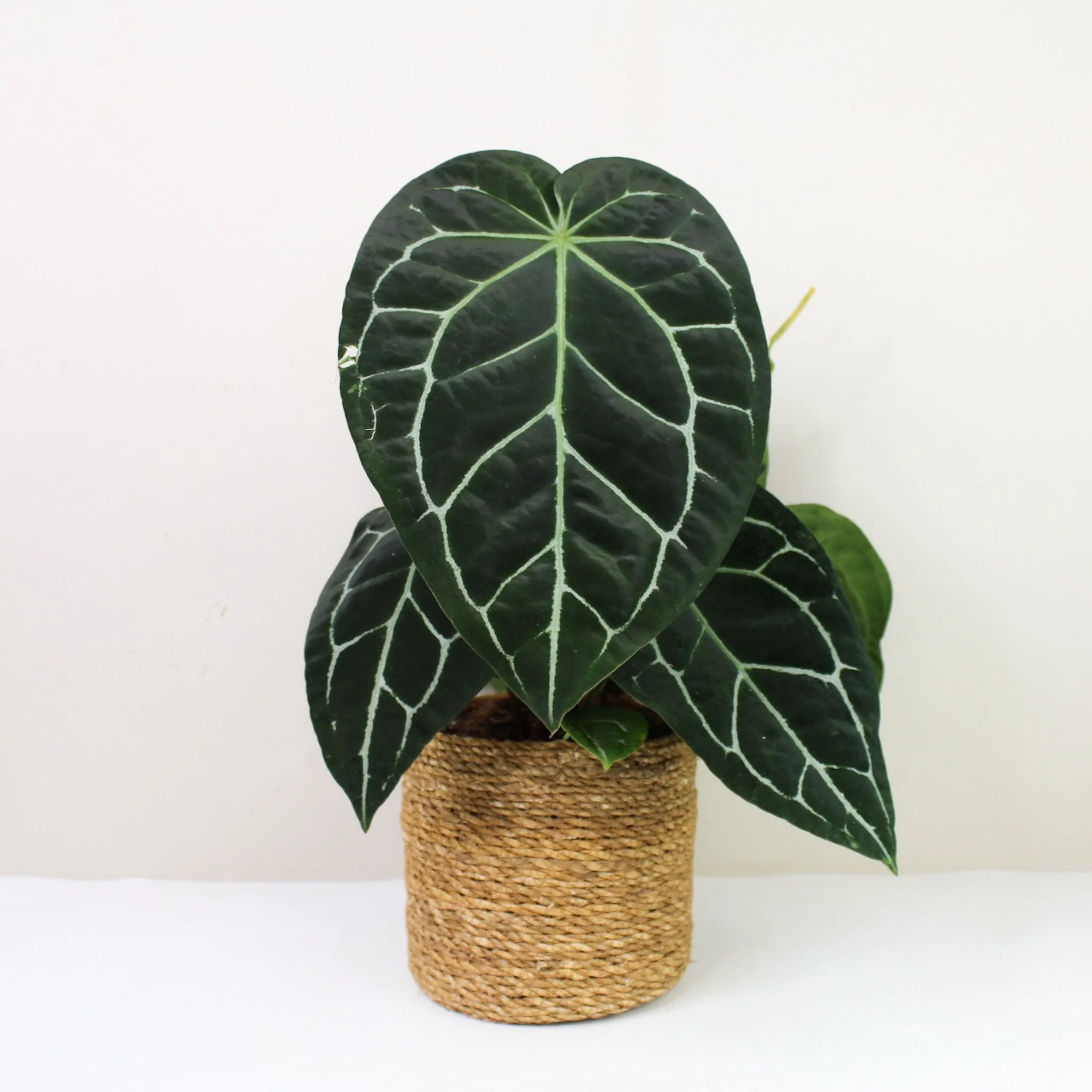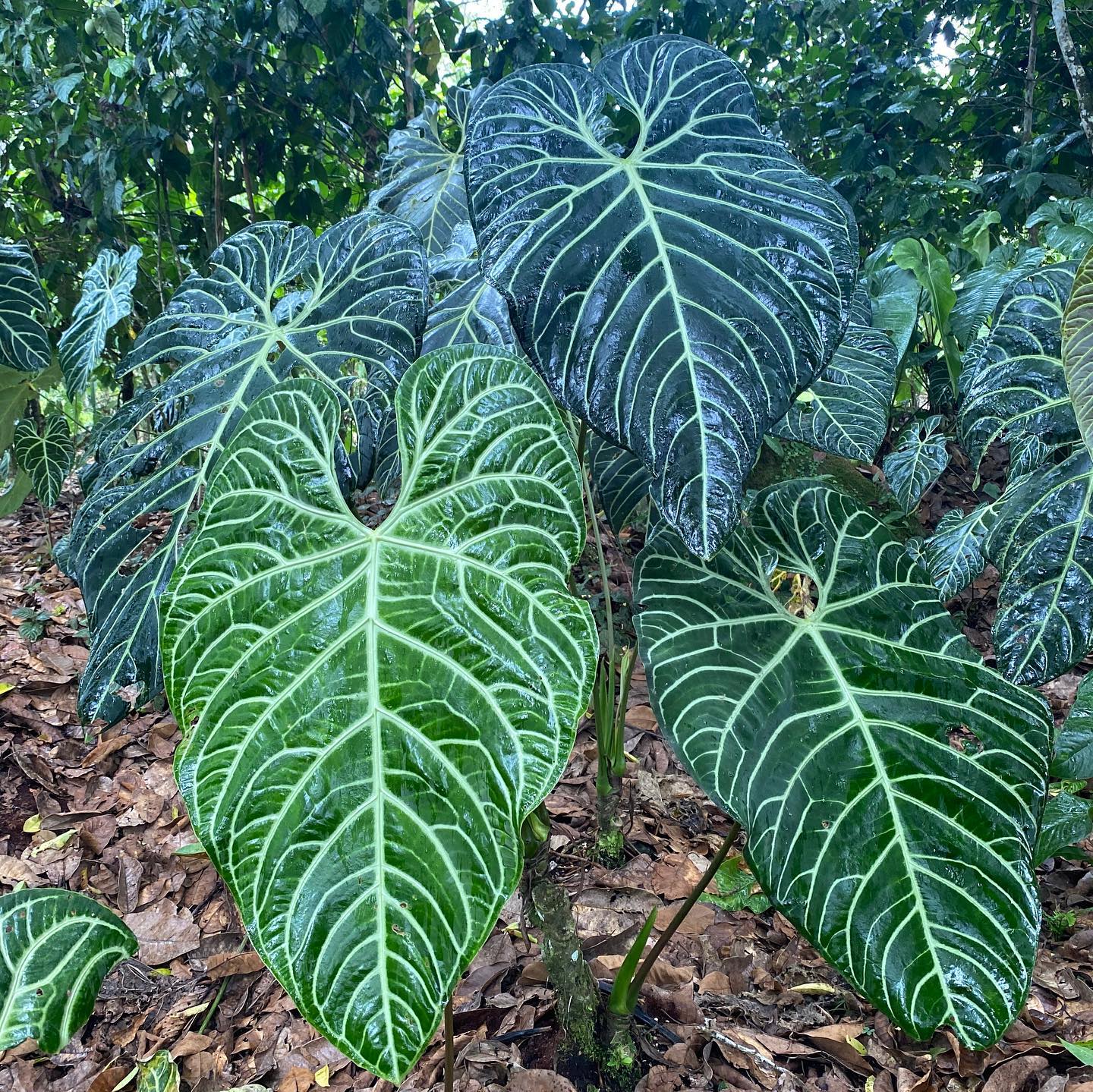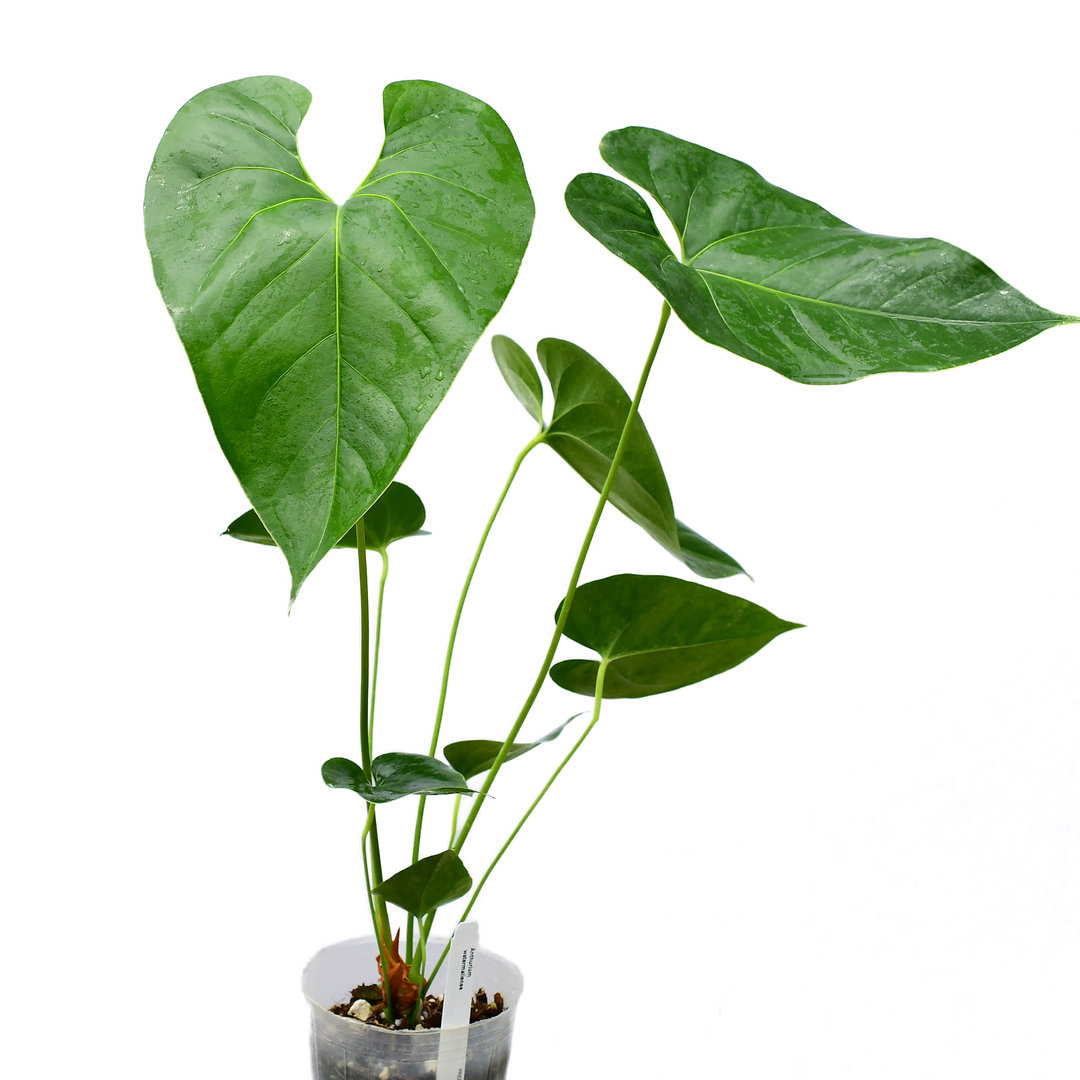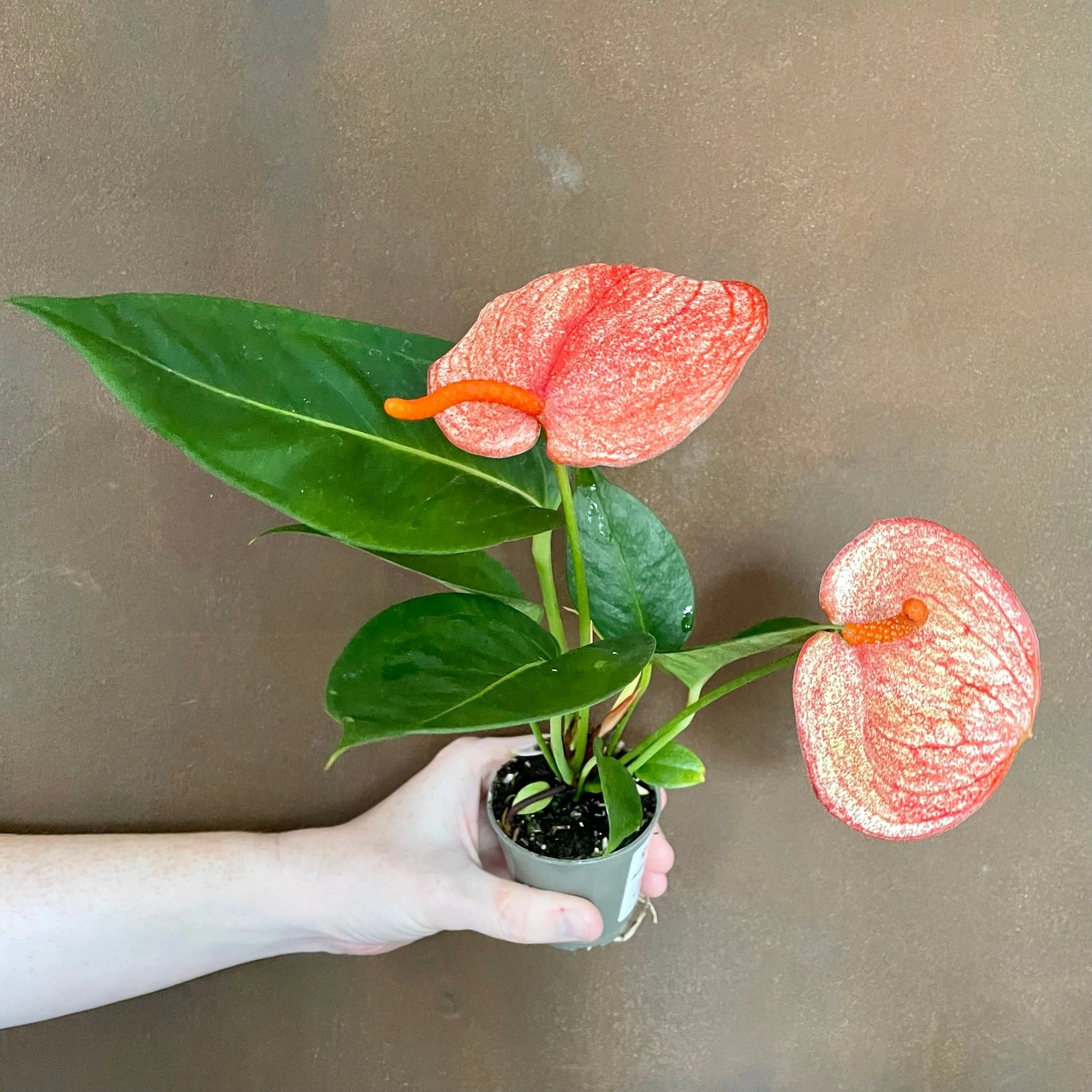Anthuriums, also known as flamingo flowers, are vibrant tropical plants known for their lush, heart-shaped leaves and delicate flowering spathes. As members of the aroid family, anthuriums are popular indoor and outdoor plants across temperate and tropical climates for their exotic, tropical flair. With over 1,000 diverse species ranging considerably in size, shape, and color, anthuriums offer seemingly endless variety for avid collectors and plant lovers.

Anthurium Species & Classification
Taxonomy
Anthuriums belong to the arum family known as Araceae. This family encompasses over 100 plant genera including calla lilies, peace lilies, and philodendrons. The anthurium genus contains over 1,000 species, the vast majority of which are epiphytic or lithophytic plants native to tropical regions of Central and South America.
Anthurium species are classified into sections and subsections based on features like leaf shape, spathe shape, spadix shape, and berry shape. While early classification methods relied heavily on these morphological characteristics, modern DNA-based analysis aims to further clarify evolutionary relationships amongst anthurium species.
Diversity
The diversity encompassed across anthurium species is truly astonishing. Leaf shapes vary dramatically, spanning simple heart-shapes, to elongated strap-like leaves, to heavily divided palmate leaves. Leaf sizes range from a few centimeters across to leaves over six feet long. Spathes exhibit seemingly endless colors from bright reds, to pinks, purples, greens, white and more, while spadix appendages evolve into intriguing hooks, spikes and frills.
This incredible diversity speaks to the evolutionary adaptations that allow different anthurium species to thrive across a range of tropical microclimates and ecosystems across Central and South America.
Popular Anthurium Species
Anthurium crystallinum
The velvety oval leaves of Anthurium crystallinum feature attractive silvery-green veining against dark green backgrounds. It produces small white spathes and spadix periodically. Native to rainforests in Mexico and Guatemala, this anthurium thrives in high humidity and indirect light indoors.

Anthurium regale
Hailing from the rainforests of Ecuador and Colombia, Anthurium regale is an epiphytic climber admired for its large, deeply lobed leaves which can measure over three feet long. It produces slender white spathes and spadix blooms. Outdoors it makes a statement climbing up trees, while indoor it requires a moss pole for support.
“Explore the Exceptional 2023 Anthurium Collection: A Curated Selection of the Rarest and Most Unique Varieties Available.”

Anthurium clarinervium
Heart-shaped velvety leaves featuring bold white veining make Anthurium clarinervium a standout houseplant. This slow-growing anthurium hails from Chiapas, Mexico and makes an easy, pet-friendly houseplant if provided bright indirect light and high humidity. Pale pink spathes with green spadix arise occasionally from mature plants.

Anthurium watermaliense
This compact Brazilian rainforest anthurium species grows epiphytically on tree trunks. It produces small, deeply lobed green leaves and tiny white spathes with pink spadix periodically. Its miniature size makes it an ideal tabletop or terrarium specimen. Outdoors it thrives mounted onto trees in shady, warm environments.

Anthurium scherzerianum
One of the most common household anthuriums, Anthurium scherzerianum is appreciated for its heart-shaped leaves and brilliant red or orange spathes which contrast beautifully against the dark green foliage. This adaptable tropical produces flowers repeatedly indoors in bright, indirect light. Native to the rainforests of Central America, it thrives as a household plant across temperate and tropical regions.

Growing Anthuriums
Light
Most anthurium species thrive in bright, indirect sunlight indoors, with some direct morning sun tolerated. Outdoor species grow beneath the rainforest canopy and thus prefer shade. Insufficient light leads to reduced flowering while direct sunlight damages leaves. Carefully monitor lighting and move plants to adjust light levels.
Watering & Humidity
Anthuriums prefer consistently moist, well-draining soil and high humidity levels upwards of 60%. Pot with an airy soil mixture allowing excess moisture to freely drain. Allow the top inch of soil dry slightly between waterings, taking care not to overwater. Increase humidity via pebble trays, misting and grouping plants. Drought stress and overly wet soils can rapidly damage roots and leaves.
Temperature
As tropical plants, anthuriums thrive in warm environments between 60-90°F. Cooler temperatures below 55°F can damage leaves and retard growth. Monitor outdoor plants during winter, moving potted plants indoors if necessary. Ensure indoor heating systems maintain temperatures above 60°F during winter.
Fertilizer
To fuel plant growth and flowering, apply balanced liquid fertilizer like a 20-20-20 formulation monthly during active growth periods, reducing to every 2-3 months during winter. Flush soils regularly to prevent potential fertilizer buildup.
Propagating Anthuriums
Anthurium species propagate readily via seed and vegetative means, allowing devotees to expand collections. Here are some common methods:
Seeds
Collect ripe orange-red berries, remove pulp and sow seeds shallowly in seed starting mix. Maintain warm temperatures, even moisture and humidity during germination. Transplant seedlings once a few true leaves emerge.
Stem Cuttings
Take 5-6 inch cuttings in spring or summer. Trim just below a node and remove lower leaves. Apply rooting hormone to the cut end and insert into moist propagating mix leaving a few nodes exposed. Maintain warmth and humidity until new growth emerges.
Plant Division
Mature, overcrowded anthurium clumps can divide via gentle teasing of root ball sections. Ensuring each section has some roots and foliage, transplant divisions into small pots using an airy potting mix. Keep divisions warm and humid while new root growth establishes.
Tissue Culture
For sterile, disease-free clones, specialized lab techniques allow mass micropropagation of plantlets grown from explants. While costly, this method yields genetically identical plants.
Conclusion
With captivating foliage and delicate blooms, Anthurium’s diverse species offer seemingly endless options for indoor and outdoor gardens across warm climates. As largely epiphytic plants from Central and South American rainforests, most species require warm temperatures, high humidity, bright indirect light and well-draining soil to thrive. Their exotic tropic allure combined with propagation ease makes anthuriums recursively rewarding staples for collections large and small. Discover new gems by acquiring species from reputable nurseries andExpand your palette via seeds or cuttings. Regardless of preferred growing space or climate, the endless variety ensures gardeners can find the perfect anthurium species to unlock their unique tropical flair.

